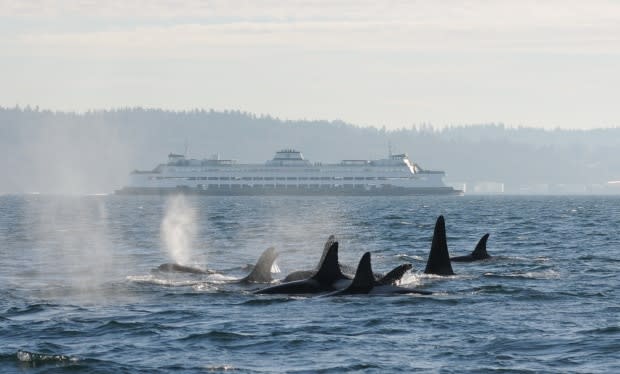BC Ferries installs thermal imaging cameras to monitor threatened whales
B.C. scientists are trying to get a better look at one of the South Coast's most threatened marine mammals using thermal imaging cameras installed off Galiano Island, B.C.
The cameras were installed at the Sturdies Bay terminal in June and are part of a year-long pilot project aimed at improving detection of southern resident killer whales in the heavily trafficked Salish Sea.
In a written statement, BC Ferries said federal scientists are trying to determine if the use of thermal imagery together with visual and acoustic surveillance is a reliable way to detect whales in the Salish Sea which is used by commercial ships and supports several passenger ferry routes
The cameras are able to "see" whales by detecting temperature differences between marine mammals, ships and the surrounding water, even at night.

Hydrophones monitor noise
Monitoring of marine life is not new.
In November last year, the federal transport ministry installed hydrophones at Boundary Pass near Saturna Island, also with the goal of monitoring the whales' habitat to improve killer whale hunting and survival outcomes.
The hydrophones were installed specifically to detect noise levels the whales are subjected to by passing ships.
According to BC Ferries, if the new thermal imaging cameras are successful, they could alert ships to the presence of the endangered local orcas in narrow shipping lanes and could help pilots make real-time decisions to slow down or avoid areas when whales are present.
BC Ferries has taken part in the Port of Vancouver Enhancing Cetacean Habitat and Observation (ECHO) program since 2014. The ECHO program aims to better understand and manage the impact of shipping activities on at-risk whales in the region.

